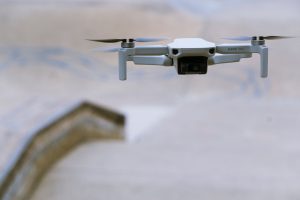Table of Contents
Introduction
A mini drone is a small drone, usually used by beginners. Because of its size, it has limited functionalities and capabilities. They are mostly indoor drones. A drone makes use of a lot of sensors housed by the IMU to maintain steady flight. These sensors, over time, may become inaccurate, and this can result in flights that are not smooth.
A drone undergoes maintenance periodically to prevent unfriendly flight experiences from occurring at any time and place. Calibration is part of this maintenance that’s carried out. We are going to show you how to do this; calibrate a mini drone step by step.
When should a mini drone be calibrated?
Calibration helps fix a lot of issues you may be encountering with your mini drone. It is the comparison of values taken or recorded by a device being tested to that of known standard value of accuracy. This comparison tells us how accurate a device that is under test is.
When a drone is not moving to the direction and way you want to it to move could be a sign that calibration is needed. Flying your mini drone in a new environment would may that you calibrate it because there might be a difference in weather conditions.
Apart from the reasons talked about above there are others that a calibration would come in handy to help in smooth and steady performance, some of these reasons could be: a crash drops in altitude, unstable drifts, etc. If you are looking to buy a mini drone check out Best Mini Drones.
What is IMU in a Drone
The inertial measurement unit consists of sensors such as thermometer, accelerometer, barometer, and gyroscope. These sensors respectively help you to keep track of the temperature, acceleration, changes in height and the attitude of the drone.
Thermometer
The thermometer is used to detect the temperature of the drone. Using the IMU, if you are to use a drone now and you turn it on, you would need to wait for it to heat or warm up to the last temperature it was calibrated at before it would be ready to use. If it were last calibrated at a low temperature, you would need to wait for it to warm up to that before it would be used.
Accelerometer
It is used to measure and keep on the record the acceleration speed of the drone. Data gotten from the device, when inputted into the IMU helps determine the to the user the direction and speed.
Barometer
The work of a barometer is to measure the changes in height. The data that is gotten from this helps In keeping track of the ascend and descend speed of the drone which is vital for flight records
Gyroscope
The gyroscope helps a user maintain the attitude they wish for the drone to maintain. This sensor helps keep it on track; at whatever angle or position that is required of the drone. Comparing this data would help you know the value to expect of your drone.
How to Calibrate a Mini Drone
The calibration of a mini drone isn’t rocket science as some people think it to be. Most drones have a manual which will guide you on how to calibrate the drone, and the process taken is quite simple and straight to the point. Pair your drone with a transmitter and put it on a level surface and follow the manual.
You can also use the trim button for calibration, try different settings till its stable. If the drone has two trim buttons, you can trim left and right; and forward and backwards. Some drones have three buttons. The third one is to stabilize drones that spin and is referred to as a yaw trim. The great thing about trimming is that it can be done in the air.
Conclusion
Calibration of your mini drone, helps you get the best out of the drone and an excellent reward for your time and money. Now that you know how and when you should calibrate a mini drone, you should be able to deal with unpleasant flight experiences and get the best experiences from flying your mini drone. These are the best drone accessories‘.

